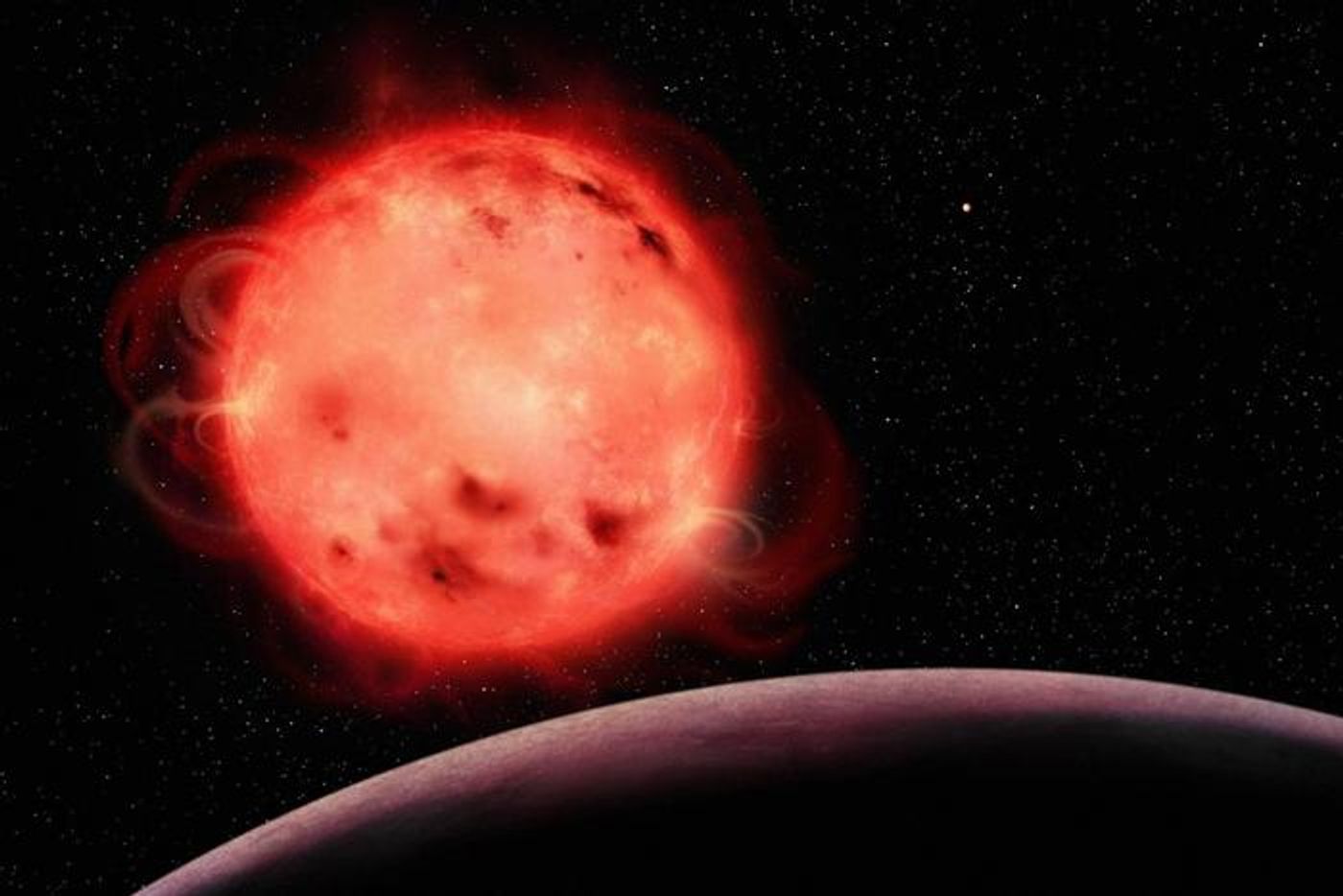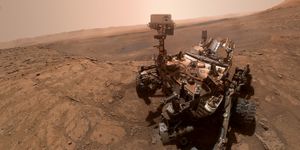TRAPPIST-1 Exoplanetary System: Unveiling the Complex Interplay of Stars and Planets
A recent study published in Astrophysical Journal Letters used NASA’s James Webb Space Telescope (JWST) to analyze the TRAPPIST-1 system, and specifically the interaction between the parent star, TRAPPIST-1, and the atmosphere its innermost exoplanet, TRAPPIST-1 b, which is one of seven Earth-sized worlds in the system. This study holds the potential to not only help scientists better understand the TRAPPIST-1 system but also how a star’s activity could influence a planet's atmosphere, and possibly life.
Artist rendition of the TRAPPIST-1 red dwarf star displaying high stellar activity, including stellar spots (colder regions of its surface, like sunspots) and flares. The exoplanet, TRAPPIST-1 b, the innermost planet to the parent star, is in the foreground with no visible atmosphere. The TRAPPIST-1 system is of high interest in the science community since it contains seven Earth-sized exoplanets. (Credit: Benoît Gougeon, Université de Montréal)
For the study, the researchers analyzed the atmosphere of TRAPPIST-1 b using spectroscopy from the JWST when the exoplanet passed in front of its parent star, also known as a transit. By analyzing the starlight passing through the atmosphere, scientists can identify atoms and molecules that comprise the atmosphere, which could give indications of its life-bearing properties. These observations were conducted over two transits and were done as part of the Canadian-led General Observers (GO) program during the first year of science operations of the JWST.
“These are the very first spectroscopic observations of any TRAPPIST-1 planet obtained by the JWST, and we’ve been waiting for them for years" said Olivia Lim, who is a PhD student at the Université de Montréal, lead author of the study, and the GO program's principal Investigator.
Based on the findings, the researchers confidently ruled out the possibility that TRAPPIST-1 b possesses a cloud-free, hydrogen-rich atmosphere but could not rule out the possibility of thinner atmospheres, such as ones containing pure water, methane, carbon dioxide, and including an atmosphere like Saturn’s largest moon, Titan, which is the only moon in our solar system with an atmosphere.
They came to these results after finding that stellar contamination plays a key role in trying to determine the atmospheric composition of exoplanet atmospheres. Stellar contamination is when the star’s activity, such as bright faculae and/or dark spots, creates what is referred to as “ghost signals” in the data, meaning the observer could mistake certain molecules for others. They noted this was a key finding for the study and emphasized the importance of considering stellar contamination when analyzing spectroscopy data from exoplanet atmospheres. The reason why stellar contamination plays a role in the TRAPPIST-1 system is because the parent star is a red dwarf, meaning it’s very active with frequent solar flares and sunspots.
“In addition to the contamination from stellar spots and faculae, we saw a stellar flare, an unpredictable event during which the star looks brighter for several minutes or hours,” said Lim. “This flare affected our measurement of the amount of light blocked by the planet. Such signatures of stellar activity are difficult to model but we need to account for them to ensure that we interpret the data correctly.”
Discovered in 2016, the TRAPPIST-1 system is located approximately 40 light-years from Earth and has garnered much attention within the science community since it contains seven Earth-sized worlds, with astronomers eager to find out if any of them could be Earth-like and possibly harbor life.
What new discoveries will astronomers make about the TRAPPIST-1 system in the coming years and decades? Only time will tell, and this is why we science!
As always, keep doing science & keep looking up!
Sources: Astrophysical Journal Letters, Wikipedia, NASA, Space Telescope Science Institute, NASA (1), Wikipedia (1)









